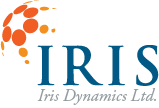- January 29, 2024
Compliant Robotics, Force Feedback, & Backdrivability
Understanding Force Feedback in Linear Motion Systems
Force feedback in industrial robotics refers to adjusting a motor's output based on the difference between target position and force setpoints, compared to actual measured values, to replicate the desired force and position output. Traditionally only employed in high-end applications like aerospace due to complexity and cost, this technology is now expanding into areas like robotic manufacturing, autonomous vehicle control, line processing, physical materials testing, lab validation, and general robotics.
Applications in Robotics and Industrial Sectors
"Backdrivability" describes a motor's ability to be influenced or moved by external forces while it is applying a force. This feature is crucial in "compliant robotics," facilitating adaptability in handling delicate or irregular objects. It's also vital in teleoperation and autonomous vehicle applications, in laboratories for integrated force sensing/control, in simplifying materials testing, and in design validation testing.
Challenges in Traditional Robotic Force Feedback Systems
Traditionally, force feedback in robotics and haptic systems required numerous components, including load cells, high-resolution encoders, high-speed servo motors, low-backlash linkages, complex control setups, and bespoke control software. These systems do enable robots to feel and exert real-world forces. However, they often suffer from smoothness issues when backdriven, mainly due to torque ripple or cogging caused by undesirable magnetic interactions inside a motor and system latency from extensive serial communication among the multiple discrete systems needed to drive a single motor. Control complexity increases significantly, especially in systems involving multiple motors for a single end effector.
In contrast, humans control the force exerted by muscles, not the direct position of limbs. This approach allows for smooth, adaptable movements with significantly less processing overhead, contrasting with traditional robotic force control systems that control position while attempting to adhere to a force limit.
ORCA™ Series Linear Motors: A Solution
The ORCA Series Linear Motors integrate position and force sensors, drivers, and controllers onto a single PCB, reducing footprint, cost, and latency. These motors dynamically adapt drive waveforms in real-time, counteracting magnetic disturbances and eliminating torque ripple or cogging, leading to smoother operation and precise control.
The ORCA Series' fully integrated, inherently force-controlled motors simplify hardware and programming in robotics. They negate the need for extensive external equipment and complex setups, enabling real and direct force control, ideal for compliant robotics applications or more organic, human-like systems.
For more information on how Iris's high-speed, low-latency linear motors may assist in your application, please consider booking an online demonstration with an applications engineer!
